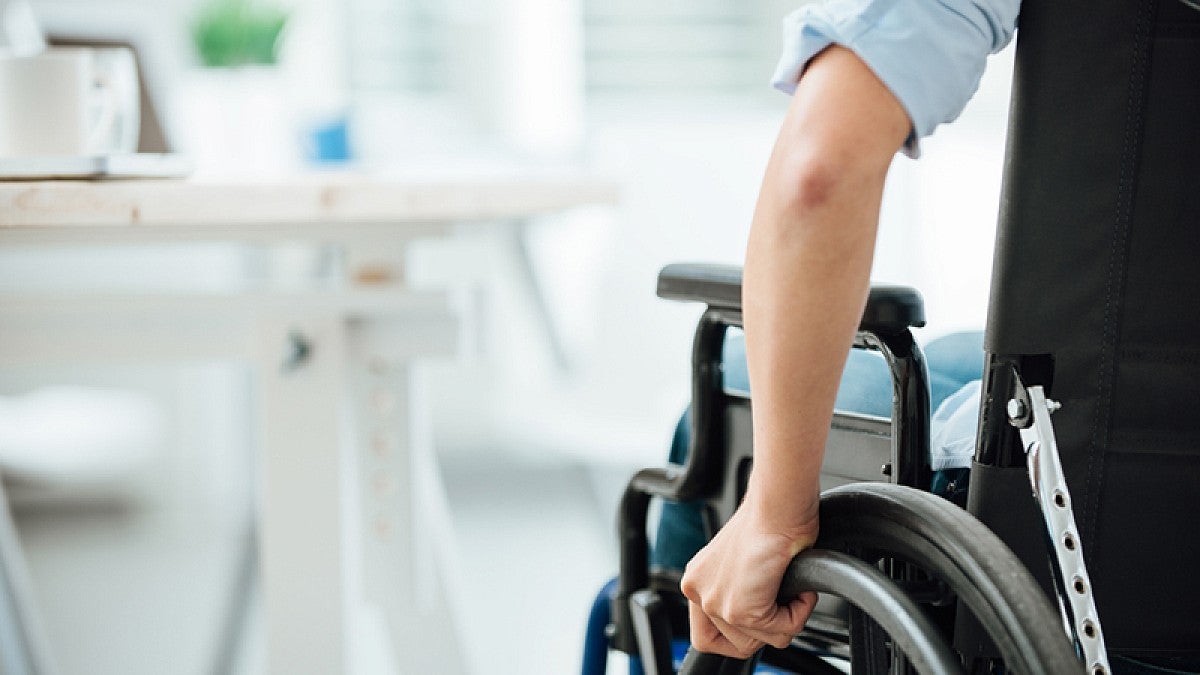The University of Oregon campus is 295 acres of lush lawns, winding pathways and historic buildings. But for students confronting mobility issues, navigating the 145-year-old campus and many of its older buildings can be a challenge.
“We’re an older campus, so we know we don’t have perfect physical access just by the nature and age of our buildings,” said Hilary Gerdes, assistant vice provost for accessibility and long-time director of the Accessible Education Center. “We work hard to accommodate students.”
That work has been recognized by New Mobility magazine, which named the UO to its list of 20 colleges that create wheelchair-friendly campuses and cultures. The magazine, the official publication of the United Spinal Association, highlights the work of the Accessible Education Center to make campus accessible not only for students in wheelchairs but also those living with any disability.
The story quotes a current student, Grace Kurlychek, a senior studying planning, public policy and management.
“If I can’t get my wheelchair under a desk, they bring in a height-adjustable one for me,” said Kurlychek, who has cerebral palsy.
Matthew Howard, a 2014 graduate who earned a degree in human physiology, also is featured. Howard, who is paraplegic, worked as a personal trainer at the Student Recreation Center when he was a student and now works as a research coordinator for the Veteran Affairs Health Care System in Portland. He also coaches CrossFit.
“The University of Oregon has built a culture of inclusivity that creates a great atmosphere for someone who uses a wheelchair,” Howard told the magazine.
The story also highlights the UO’s disability studies minor in the College of Arts and Sciences; the AccessABILITY Student Union; the Access Shuttle, a free ride service available to members of the campus community with limited mobility; and the work of 1981 UO master’s graduate Susan Sygall, CEO and co-founder of Eugene-based Mobility International USA, who teaches a class on global perspectives on disability.
The national recognition, Gerdes said, is “really neat” and “a positive thing.”
The Accessible Education Center works with more than 2,000 undergraduate and graduate students who use wheelchairs, are blind, deaf, hard of hearing or have chronic health issues that require accommodation, including a growing number of students dealing with mental health issues, she said.
Accommodations might include relocating classrooms if necessary, installing adaptive furniture, removing obstacles, providing sign language interpreters and closed captioning, and offering alternative testing for students struggling with mental health issues.
Work continues to improve accessibility on campus. For instance, Friendly Hall, the last main classroom building that has been inaccessible above the first floor, is in the process of getting an elevator installed,
New construction and remodeling, meanwhile, provide opportunities to make sure the UO not only meets Americans with Disabilities Act requirements but goes beyond them to address usability issues and universal design practices.
For example, in McKenzie Hall, classrooms were renovated to improve active learning opportunities for all students and now include flat floors to make them more accessible for students using wheelchairs.
The Accessible Education Center has created a new online training module and workshops under a new Accessibility Ally Program, starting March 5, that provides an opportunity for interested faculty members and staff to increase awareness related to disability and to develop skills and knowledge to act as an ally for accessibility and inclusion of students with disabilities


